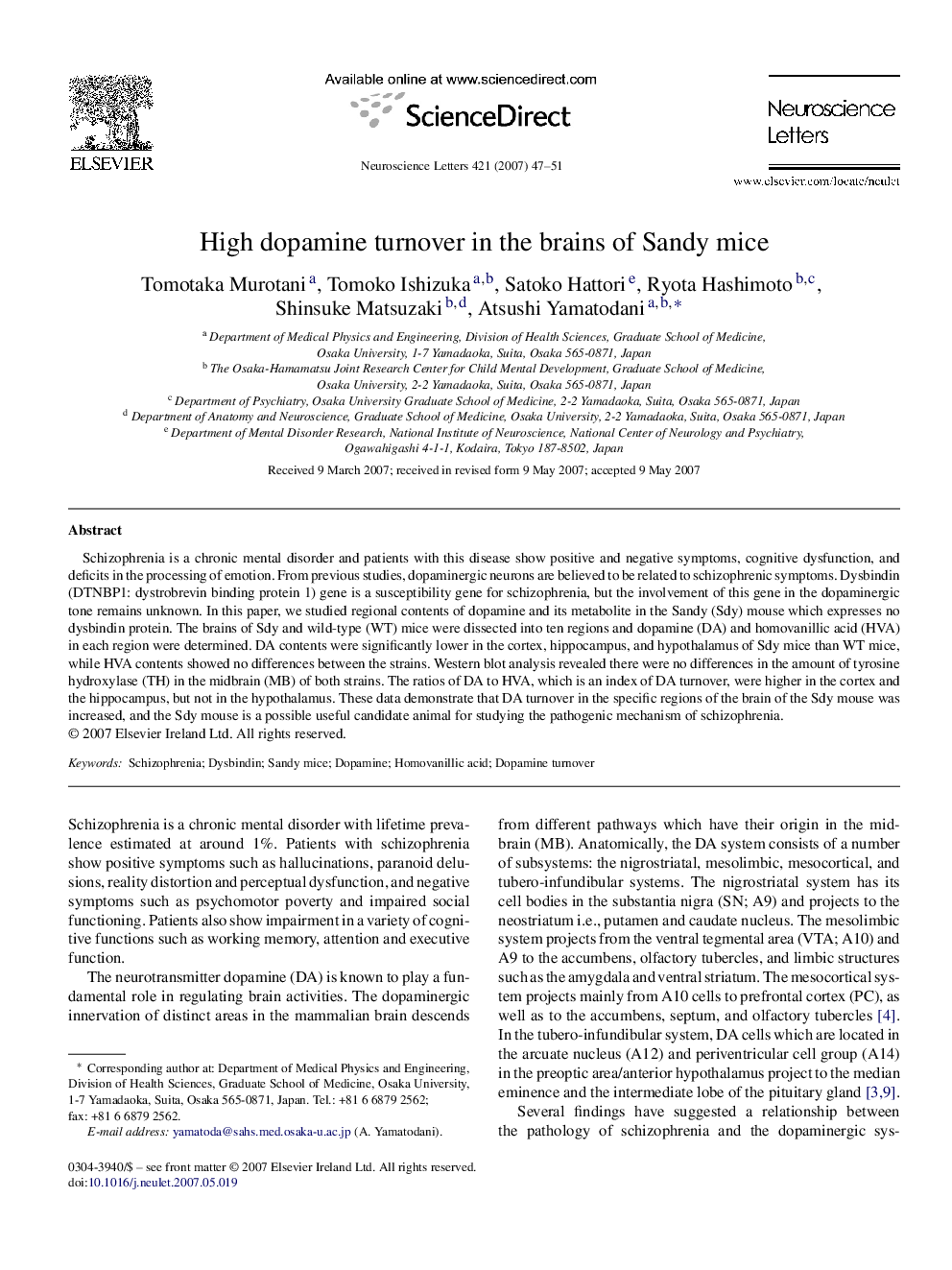| Article ID | Journal | Published Year | Pages | File Type |
|---|---|---|---|---|
| 4349328 | Neuroscience Letters | 2007 | 5 Pages |
Schizophrenia is a chronic mental disorder and patients with this disease show positive and negative symptoms, cognitive dysfunction, and deficits in the processing of emotion. From previous studies, dopaminergic neurons are believed to be related to schizophrenic symptoms. Dysbindin (DTNBP1: dystrobrevin binding protein 1) gene is a susceptibility gene for schizophrenia, but the involvement of this gene in the dopaminergic tone remains unknown. In this paper, we studied regional contents of dopamine and its metabolite in the Sandy (Sdy) mouse which expresses no dysbindin protein. The brains of Sdy and wild-type (WT) mice were dissected into ten regions and dopamine (DA) and homovanillic acid (HVA) in each region were determined. DA contents were significantly lower in the cortex, hippocampus, and hypothalamus of Sdy mice than WT mice, while HVA contents showed no differences between the strains. Western blot analysis revealed there were no differences in the amount of tyrosine hydroxylase (TH) in the midbrain (MB) of both strains. The ratios of DA to HVA, which is an index of DA turnover, were higher in the cortex and the hippocampus, but not in the hypothalamus. These data demonstrate that DA turnover in the specific regions of the brain of the Sdy mouse was increased, and the Sdy mouse is a possible useful candidate animal for studying the pathogenic mechanism of schizophrenia.
